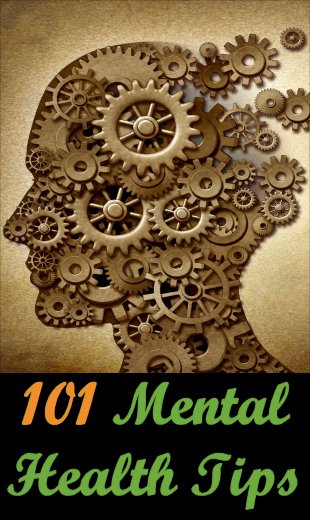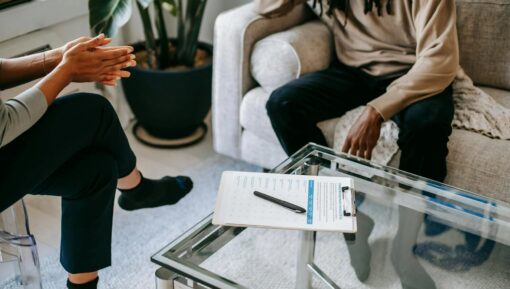10 Secrets To Managing Your Anxiety In Public
Since common symptoms of anxiety and stress are panic attacks when in public, then this report will provide you with a number of tactics you can use to cope with a panic attack and calm you down again.
Controlling Your Breathing
When you start to feel unduly anxious, one of the first physical symptoms you’ll often notice is a change in your breathing patterns – you’ll feel short of breath.
This is a sign that your “freeze, flight, or fight” response is kicking in.
The solution is to try to take long, deep breaths, to slow everything down.
However, it’s important that you practise these deep breathing techniques first, in a situation where you are not stressed out, such as, of course, your own home.
Many people do these exercises on getting up, while others do them at the end of the day, after returning home.
Either way, it’s a habit worth developing, not only because it’s beneficial by itself, but also because it then becomes a tool you can make use of when you recognize the onset of an anxiety attack when in public places.
Distract Your Mind
The more you focus on your panic attack, the worse it will often become.
So, one trick is to consciously focus your mind on something else – a deliberate distraction.
There are a lot possibilities here, including:
- Playing a game (e.g. on your phone)
- Counting from 1 to 100 in unusual increments (e.g. in threes, sevens, nines)
- Creating a shopping list in your head
- Reciting poetry you learned at school
- Remembering family birthdays
- Thinking about your favourite vacation
- Recalling song lyrics
- Reading a book
The key, of course, is to expend your mental energy on something other than your panic attack.
Don’t Feel Embarrassed
Just because your body starts to feel weird when the anxiety hits, remember that most of the symptoms you experience are internal.
Unless somebody is paying close attention to you and knows what to look for, nobody else will even realize anything is wrong.
So don’t add to your problems by feeling self-conscious and worrying about what others will think, or that you are behaving weirdly.
Get Professional Help For Agoraphobia
You can have a panic attack without suffering from agoraphobia, but if you do suffer from true agoraphobia as well, then don’t be afraid to seek out professional help.
Agoraphobia can be completely paralzying, preventing you from leading a normal life, turning you into a recluse, and causing you to miss out on social events.
The overlap comes when you start fearing the onset of a panic attack while in public, so if you’re experiencing both agoraphobia and anxiety-induced panic attacks, then you need to tackie both issues.
It’s Only Adrenaline
When you start to feel signs of anxiety, just remember that it’s nothing more than adrenaline flooding your body, It’s a natural reaction to what the body perceives as a threat.
The real issue is whether the threat is real or not, and in the case of most anxiety attacks, the threat is usually only in your head.
Practise Mindfulness
By this, I mean being deeply aware of both what’s happening inside your body and mind, and what’s happening around you.
So, try to focus on your breathing while really observing your surroundings in detail. For example, look at everything little thing in a nearby shop window, concentrate on the clothing or jewellery that people are wearing (without staring, of course), or take in the beauty of flowers or trees that happen to be around you,
While this sounds the same as the distraction technique above, it’s different because this is all about living in the moment, feeling part of it,, and accepting the anxiety for what it is – just a feeling.
Ride It Out
In most cases, a panic attack brought on by anxiety is not a reaction to genuine danger, which means you are most likely not in any real harm.
However, if you try to run away from the situation, you are essentially reinforcing your reaction, setting an unwelcome precedent for the next time you are in such a position.
It is far better, therefore, to try to ride it out, by standing still or sitting down where you are (whichever is more practical), until your panic attack subsides.
Set Goals
By this, I mean you should try to stay out in public for a specified amount of time, starting small, and gradually building up as your confidence grows.
The key here is to take it slow and steady, and don’t be overly ambitious – it’s much better to experience a continual series of small successes than to have what feels like a failure after overreaching and then suffer a setback.
Take A Friend With You
I realize that this may not always be practical, but it’s definitely worth trying, especially on the first few times you venture in public after a long break.
A friend can:
- Provide moral support.
- Prevent you from feeling as though it’s just you against the entire world.
- Act as a focal point and distraction from everything that’s going on around you.
- Learn to recognize the onset of your anxiety symptoms and take prompt action to calm you down again.
Now, before doing this for the first time, it’s important to tell your friend what they need to look out for (e.g. dizziness, rapid breathing, shaking), so they can react quickly.
You also need to let them know what works and what doesn’t work in terms of reducing that anxiety (e.g. go and sit down, have a drink, go into a shop where there are fewer people).
Visualizing A Positive Experience
This will work better for some people than others, because about 20% of people (myself included) are unable to truly visualize anything. (While my wife was able to “see things in her mind’s eye” as clearly as though the object were right there in front of her, my mind’s eye is as blind as a bat.)
However, if you have this ability, then before you go out, try to imagine how you will feel after successfully negotiating your excursion.
Doing this will increase your confidence once you step outside your front door, thus minimizing the chances of having an anxiety attack.
Remember, many professional sports people use visualization techniques all the time (e.g. to picture their golf ball going in the hole).
Conclusion
You may find that some of these tricks work better than others, and that you may need to use more than one of them at the same time (e.g. sit down, don’t run, and divert your mind elsewhere).
Every person is different, and things that work for others may not work for you (and vice versa, of course), so keep trying various strategies until you find the one(s) that work best for you. If a technique does not work for you, it really doesn’t matter – it doesn’t mean you a failure, it just means you need to use another tactic.
Additional Resources
These are suggestions for those who wish to delve deeper into any of the above:







